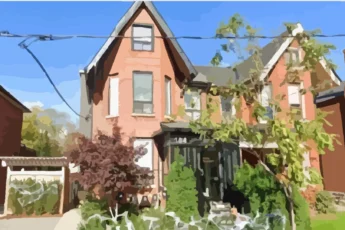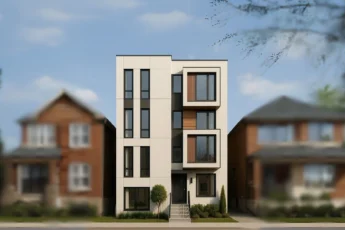Why Change Feels Threatening: The Psychology Behind Housing Resistance
The idea of home is deeply personal. It is not just about real estate values or square footage—it is about identity, stability, and emotional connection. This is why proposals to introduce Missing Middle housing—duplexes, triplexes, fourplexes, and townhomes—often trigger intense resistance from communities. While economic and policy factors play a role, the strongest opposition often comes from deep-seated psychological biases and fears.
Resistance to change in housing often stems from a sense of loss rather than an evaluation of potential benefits. Homeowners tend to focus on what they fear they might lose—a familiar streetscape, a perceived sense of exclusivity, or even a long-held vision of what their neighborhood should be. The psychological tendency known as loss aversion reinforces these fears, making any proposed change feel riskier than it actually is. Coupled with status quo bias, where people favor keeping things as they are even when change could be beneficial, Missing Middle housing becomes an easy target for opposition.
At the core of this resistance is an emotional attachment to neighborhood identity. Many long-term homeowners have built a strong connection to the way their communities look and feel. Introducing multi-unit housing can feel like an erosion of that identity, triggering concerns that a neighborhood will change too rapidly or in ways that are outside their control. While concerns over increased density, traffic, and infrastructure strain are often cited, the underlying resistance is frequently more emotional than logistical.
Why the Resistance Exists
Much of the concern surrounding Missing Middle housing is not rooted in direct experience but in perception. Many homeowners assume that increased density will lead to declining property values, despite research showing that well-planned density can have the opposite effect. Similarly, fears about parking shortages or infrastructure strain are often exaggerated, as small-scale multi-unit housing has a negligible impact compared to high-rise developments.
There is also a social dynamic at play. When a neighborhood has traditionally been single-family homes, introducing multiplexes can feel like an unwanted shift in exclusivity and social status. Some residents may unconsciously view new tenants as outsiders or fear that rental housing will bring instability. This resistance is not always voiced openly, but it shapes the way communities react to proposed changes.
How Developers Can Overcome Psychological Barriers
Overcoming resistance to Missing Middle housing requires more than just zoning changes—it requires a shift in how change is framed and communicated.
Developers and policymakers need to approach community engagement with empathy and transparency. Rather than imposing changes, they must involve residents early, making them feel like stakeholders rather than bystanders. This can be done by showcasing successful case studies from other cities, where well-integrated multiplex housing has benefited communities without disrupting their character.
Framing also matters. When discussions focus solely on increased density, resistance grows. But when the conversation shifts to providing housing for young professionals, allowing seniors to downsize while staying in their neighborhood, or ensuring local businesses have nearby employees, communities begin to see Missing Middle housing as an enhancement rather than a disruption.
Design plays a crucial role in addressing concerns as well. When multiplexes are built with architectural sensitivity, maintaining the aesthetic and scale of surrounding homes, opposition tends to soften. The perception of poorly designed, out-of-place developments is often stronger than the reality.
What Homeowners Should Really Worry About
Instead of focusing on misplaced fears, homeowners should consider the real challenges facing Toronto’s housing market.
A lack of diverse housing options means that homeownership is increasingly out of reach for younger generations, including the children of current homeowners. Without gentle density increases, many will be priced out of their own communities, leading to a less diverse, aging population. Additionally, seniors who wish to downsize may find no viable options in their own neighborhoods, forcing them to relocate farther away from family and support networks.
Communities that fail to adapt risk stagnation. A neighborhood that remains exclusively single-family housing in a rapidly growing city will likely experience economic and demographic decline over time. A mix of housing types ensures a more resilient, thriving local economy, where local businesses, schools, and public services remain sustainable.
The Impact of Resistance on Future Tenants: A Divided City?
The consequences of resistance to Missing Middle housing extend beyond homeowners and policymakers. They directly impact future tenants, shaping their experience of inclusion—or exclusion—in Toronto’s neighborhoods.
When new housing is introduced amid strong community opposition, tenants may feel like unwelcome outsiders. The idea that they are responsible for changing the neighborhood’s identity can lead to social divisions, creating a feeling of separation rather than integration. This is particularly problematic when rental housing is subtly framed as a lower-tier option compared to ownership, reinforcing stereotypes about who belongs in certain areas.
Long-term, continued resistance to housing diversity risks creating a city of exclusion, where established neighborhoods remain closed off to anyone who cannot afford a single-family home. This does not just limit individual opportunity; it restricts the city’s overall growth and prosperity. If Toronto does not adapt, it risks entrenching economic divides, where certain areas remain unaffordable and inaccessible while others bear the full burden of new housing development.
How It Should Impact Society Instead
Instead of creating barriers to change, communities should see Missing Middle housing as an opportunity for inclusivity, sustainability, and long-term resilience.
A neighborhood with a mix of housing types ensures that people of different incomes, life stages, and professions can live side by side, creating a stronger, more connected community. It allows older people to downsize without leaving their community, young families to find starter homes, and essential workers to live closer to their jobs. Housing diversity also supports local businesses, schools, and public services, keeping neighborhoods economically and socially vibrant.
The conversation around Missing Middle housing needs to shift from loss to opportunity. Instead of focusing on what might change, communities should consider what they stand to gain: a city that is more adaptable, more inclusive, and better equipped for the future.
Conclusion: The Psychology of Change and the Future of Housing
Resistance to change is deeply ingrained, but it should not prevent progress. Missing Middle housing is not about erasing neighborhood character; it is about ensuring that Toronto remains a city where people of all backgrounds can thrive.
For this transition to be successful, homeowners must see themselves as participants in change rather than victims of it. By engaging with communities early, addressing fears with facts, and showcasing how thoughtful density benefits everyone, Toronto can build a more sustainable, welcoming housing landscape.
The challenge is not just to introduce new housing—it is to shift the conversation from what might be lost to what can be gained.



